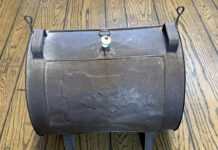The American economy is downright Dickensian. If you’re in investment banking, airlines, real estate or automobile anything, it’s the worst of times. If you’re in commodities — oil, copper, potash, gold, corn, soybeans — it’s the best of times.
How long can this depressingly low goods and services/manically high commodity price split continue before this tale of two economies folds back into one?
No one can say, but if the data and forecasts of two recent land grant bulletins are combined, crop farmers likely will continue to roll for two or three more years. The scary part, however, is that if these numbers are anywhere near the mark, today’s through-the-roof land prices and cash rents are too cheap.
78% input increase?
The first bulletin, a July 11 Farm Economics Facts & Opinions from the University of Illinois, begins by throwing some cold water on next year’s heated corn and soybean economics.
According to U of I ag economist Gary Schnitkey, farmers with “high-productivity” land will plant $529 in non-land inputs per corn acre in 2009, $141 more than in 2008 and 85 percent more than the average 2003-2007 planting costs.
Non-land soybean production costs, estimates Schnitkey, are similarly higher: $239 per acre this year, $321 per acre next year. That’s a 78 percent increase over the 2003-07 average of $141 per acre.
When he plugs in modest — by today’s measure anyway — 2009 corn and soybean sale prices, $4.80 and $11 per bushel respectively, Schnitkey’s projections show fat per-acre profits despite usury-like input costs.
At 175 bushel per acre yield, corn delivers $412 per acre profit; at 54 bushel per acre, soybeans deliver $297.
Remember, the Illinois numbers do not include land costs.
Look out
Given those two profit numbers, though, do you think cash rents on flat, black Illinois dirt will soar this winter? Some already have.
According to a July 21 Internet blurb from AgriMarketing magazine, one 800-acre, central Illinois farm just rented for $450 per acre in 2009. That’s 38 percent higher than 2008’s rent.
(The landlord math? 800 acres x $450 per acre = $360,000 gross. Hmm, must be why the classic crop rotation for a retired Illinois landowner has long been described as “corn, soybeans and Miami.”)
It could happen
As high-flying — OK, just plumb crazy — as that appears, Iowa State University’s respected market watcher Robert Wisner’s July Grain Balance Sheet for corn shows it very doable.
In fact, when Wisner takes into account the impact ethanol and biodiesel will likely have on corn and soybean prices through the 2009/10 marketing year, his current crystal ball shows corn prices between $5.90 and $7.10 per bushel over the next two years and soybean prices between $11 and $17.
“Our projections,” he writes, “which are lower than recent projections from USDA, show another 28 percent or 825 million bushel increase (for ethanol production) likely in the marketing year beginning Sept. 1, 2008. That’s a combined increase of almost 2.5 billion bushels in four years.”
On top of that, U.S. livestock producers need to cut feed usage by at least 780 million bushel nationwide, a massive reduction, if Iowa cash corn is to remain in his estimated $5.90 to $6.95 per bushel range during the upcoming marketing year.
In short, Wisner concludes, “With no changes in biofuels and Conservation Reserve Program policies, very tight U.S. and world corn supplies would appear likely for the next few years. As the same time, demand for additional cropland for corn is likely to keep soybean supply tight.”
That will keep strong upward pressure on land prices and rents.
Until the best of times end, at least, and they always do.













